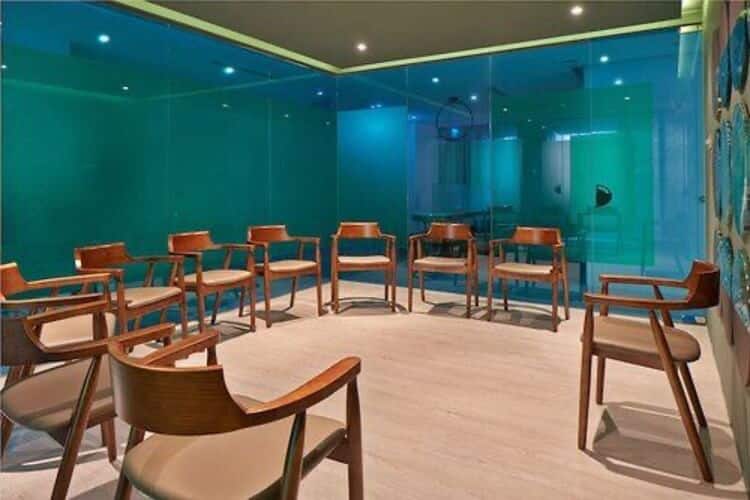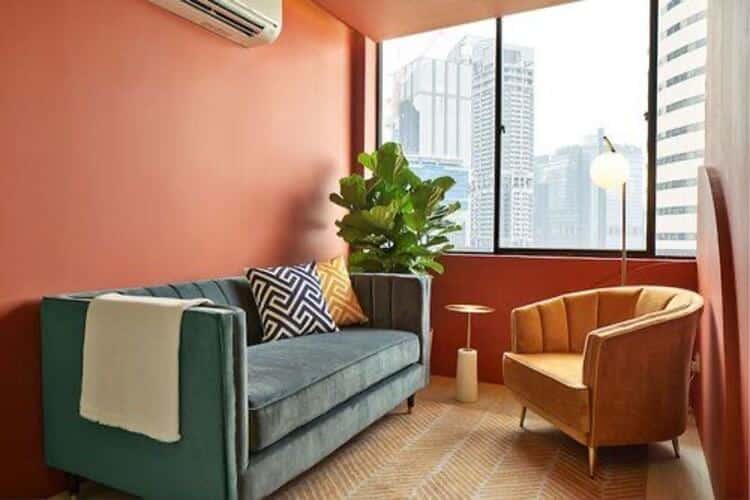Table of Contents
Factors To Consider When Selecting A Therapy Room In Singapore
The way a room is designed plays a significant role in creating the atmosphere. For example, dark colours can make a therapy room seem small while lighter colours make a space look bigger than it actually is.
Just like how we would design an office space or our home living room, it’s also important to give thought to factors such as layout, material and colours when creating a therapy room. We will discuss some factors to consider when choosing a therapy room.
What is a therapy room?
A therapy room is designed to promote healing. Compared to the traditional clinical room, therapy rooms are created with the aim to help individuals feel more relaxed. The comfortable environment encourages patients to open up, talk, and face their issues. This will result in a speedier healing process.
Therapy room design
So what exactly makes a good therapy space? Here’s what you should consider when it comes to therapy room design.
1. Colour schemes
If you’re renting a space, you may not be able to change the wallpaper or paint on the wall. However, if you do have a chance to choose what colours go on the wall, light soothing tones such as shades of sea green and blue are advisable.
2. Seating
Arrange for non-confrontational seating. Try having both the therapist and client’s chair to be equally comfortable. Having the chairs at equal height (not having the therapist’s chair higher than the client’s) can be conducive to dialogue.
Chairs should have good back support, adjustable and easy to move around. However, they should be heavy enough so that the clients with a history of violence are unable to pick it up.
Positioning it where clients can see the door might also provide them with a better sense of safety and security.
3. Furniture
Furniture needs to be age-appropriate. For example, if you are conducting play therapy for children, you’ll need tables and chairs that are made for kids.
It is also important that clients feel comfortable. If you’re using desks and need to facilitate discussion, round tables can help with communication.
4. Materials
Research shows that when natural materials such as wood surfaces are used on the floor and/or walls, they can help people to feel more comfortable. However, this is only so if they do not take up more than 45% of the room surfaces.
Additionally, people also seem to prefer surfaces that do not leave traces of others previously in the room. For example, fingerprints on glass surfaces.
5. Lighting
Light levels should be comfortable – neither too bright and nor too dark. Additionally, you can also have lamps or other light fixtures that are available for clients to adjust as they please. This can help empower them and demonstrate that the therapist is taking their needs into consideration.
6. Windows
Besides using artificial light, natural sunlight from windows can help lift up the mood. If you have windows around, you can keep them open if the weather permits so that the space looks bright, warm, and airy.
7. Nature
Research gives weight to nature having a link to better mental health. To take advantage of this, you can have a few plants in the room or have a view of peaceful landscapes. Plants can also double up as part of the decor. You can also consider having a garden space nearby.
8. Soft furnishings
Soft furnishings such as carpets and rugs can be very soothing and provide a sense of comfort.
9. Privacy
A therapy room should ideally offer as much privacy as possible. You want to ensure that conversations cannot be overheard by people outside the room.
It’s also wise to have discreet entrances and exits so that your clients feel safe and protected.
10. Positive distractions
Having some ‘distractions’ can be good in the sense that it can help clients to take a break from the discussion, especially when dealing with uncomfortable issues.
For example, a serene piece of artwork to focus on or just a calm spot with some plants can give them a chance to rest from the conversation for a few moments.
11. Personalisation
Personal items such as small mementoes can help clients to feel more ‘at home’ as it makes the space less clinical. However, do not overdo it and keep it to a minimum.
12. Facilities and amenities
If you’re going to rent a small therapy room, you should also consider the facilities and amenities that come along. WiFi, electrical outlets, and printing facilities are all very important.
Additionally, having a pantry, and storage space will also make it more convenient for you. Security is another factor that you should keep in mind. This is especially so if you are booked for appointments during non-working hours.
Therapy room layouts to avoid
On the other hand, there are some things that you should avoid when it comes to selecting a therapy room. Here are a few:
Closed-in spaces
Closed-in spaces or rooms that have no windows and are made up of only hard surfaces can become claustrophobic. These rooms can cause clients to feel uncomfortable and give a caged-in feeling.
Fixed seating
Be aware of having fixed seating as this can cause clients to be a tad uncomfortable. Instead, give clients the option of being able to adjust the seat, even if just a little. This will provide a sense of agency and perhaps make it easier for clients to open up.
Poorly designed waiting rooms
Besides the therapy room itself, consideration should also be given to the waiting room. Poorly designed waiting rooms can increase anxiety for patients who are already anxious. It can also give the wrong impression that the client will not receive adequate care.
While it’s not necessary to renovate the whole waiting room space, small adjustments can help. For example, ensure that the place is neat and tidy, or add some plants to brighten up the room.
Clutter
Clutter can contribute to anxiety and chaos. A neat and tidy space free of clutter will help maintain a calm and orderly space.
Potential triggers
You’ll want to avoid having potential triggers in the room, resulting in setbacks in therapy progress. For example, artworks or pictures showing violence, sadness or chaos may add to the issues that the patient is already experiencing.
Therapy room for rent in Singapore
Some of the best therapy rooms available for rent in Singapore can be found at A Space Between, a copractice space specially designed to meet the needs of therapists and professionals.
Therapy rooms at A Space Between are designed with relaxing colour schemes and choicest furnishings to create a comfortable environment that’s effective for therapy. There are a total of 14 rooms and you’ll be able to find a suitable option for one-on-one therapy, couple therapy, family therapy and even group therapy.
Additionally, there is also a modern, serene waiting area that your clients can wait comfortably at. A pantry area, Member’s Lounge, and storage area are also available for members to utilise.
Conclusion
Having a well-designed therapy room can contribute to the client’s healing. It’s important to have a space that is calm and comfortable as well as secure and private. If you find redoing the whole space to be very costly, start with small adjustments. Coworking spaces like A Space Between, cater specifically to mental health professionals and are good alternatives.
No matter what you’re facing, perhaps our website can offer up some solace or comfort. Know that you’re not alone, and that there is help available. This can be hard to keep in mind if you haven’t quite found the right support system. While it’s definitely not easy to find the right fit—whether you’re looking for a support group or a mental health provider—with diligence, it’s totally possible.
If you are a therapist, life coach or counsellor looking to join our growing community, head over to book a tour once you have learnt about the plans we offer. At A Space Between, there is a ready league of providers you can network with. With professionals from various backgrounds and therapy practices, there are bound to be the ones you can connect with. Private practice does not have to be lonely.







